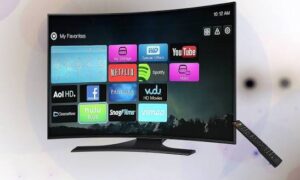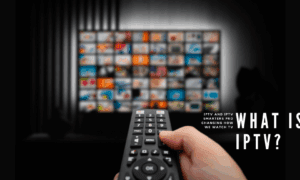From flickering black-and-white broadcasts in dusty lounges to crystal-clear 4K streams on sleek smart TVs, British television has traveled an incredible road. It’s more than entertainment — it’s a timeline of social change, innovation, and shifting cultural priorities.
In today’s on-demand world, we often forget how revolutionary the earliest broadcasts were. But the story of UK television is rich with groundbreaking moments — from the Black and White broadcasts to the dawn of digital streaming. This article explores how the UK has moved from antennas to IPTV, and why the digital revolution is far from over.
-
The Birth of Television in the UK
Television’s roots in the UK go back nearly a century. In the 1930s, the BBC launched its first experimental TV broadcasts, and while only a few households had receivers, it marked the beginning of a new media age.
- 1936: The BBC made history with the world’s first regular high-definition broadcast service from Alexandra Palace.
- Early television sets were luxury goods — ornate, wooden, and possessing screens not much larger than a tablet today.
- Programming was basic but trailblazing — featuring news bulletins, theatrical performances, and live music.
World War II paused the BBC’s television service, but it resumed stronger in 1946. The post-war period was a launchpad. By the 1950s, televisions were becoming more accessible, symbolizing modernity and status. The seeds of national identity through shared programming were sown here.
-
The Rise of Colour TV and National Broadcasting
Fast-forward to the 1960s — a decade of social change, and for TV, a revolution in both form and content.
- 1967: BBC Two debuted as the first channel in Europe to broadcast in colour, beginning with Wimbledon and the Summer of Love.
- Colour televisions quickly became a family aspiration, even with their high cost and limited colour programming.
- The introduction of the TV licence model ensured public accountability and investment into the quality of programming.
The 60s and 70s brought British classics like Doctor Who, Coronation Street, and Fawlty Towers into living rooms. Families now revolved around the TV set, often planning their evenings around a programming schedule. It was the age of appointment viewing, where the nation collectively tuned in.
National broadcasting helped form a unified cultural consciousness — something that’s far more fragmented in the modern, on-demand world.
-
The Digital Revolution: From Analogue to Digital
The turn of the century brought another game-changer: digital broadcasting. This shift wasn’t just about better picture and sound — it fundamentally changed how television content was produced, distributed, and consumed.
- 1998: The launch of ONdigital (which later became ITV Digital) introduced digital TV to British households.
- Viewers now had access to multiple channels, interactive menus, and electronic program guides.
- 2012: The analogue signal was turned off entirely in the UK, completing the national digital switchover.
Digital meant democratization. Smaller broadcasters, niche content, and regional programming found a voice. It broke the monopoly of big players and diversified content offerings. Television was no longer a passive experience — it was now searchable, sortable, and increasingly on-demand.
-
The Satellite and Cable Boom
While digital terrestrial TV expanded reach, it was satellite and cable services that truly expanded scope.
- Sky led the charge with premium sports, movies, and international programming. Households suddenly had access to hundreds of channels.
- Virgin Media added competition, bundling TV with broadband and phone services, creating the first “triple-play” packages.
- Subscription TV became the new norm — viewers were no longer just audiences, they were consumers.
This era saw the rise of paid content. The licence fee still funded BBC programming, but many households opted for subscription services to access exclusive content and advanced features like pause, record, and rewind.
TV was evolving from a communal family activity to a personalized media experience. Households often had multiple TVs, each member watching their own thing.
-
The Streaming Era: Netflix and Beyond
The next tidal wave came not through a dish or cable but through the internet. Streaming transformed TV from a timed activity into an all-access, bingeable playground.
- 2012: Netflix launched in the UK, followed shortly by Amazon Prime Video.
- Platforms offered entire seasons at once, turning TV into a time-shifted, binge-centric experience.
- Disney+, Apple TV+, and niche services joined in, each competing for subscribers with exclusive content.
Streaming killed the schedule. You no longer had to wait a week for the next episode — you could watch the entire series in a weekend. The algorithm now dictated what we watched, based on our habits, likes, and moods.
This was also the era of global content. K-dramas, Spanish thrillers, and American documentaries coexisted with British dramas, giving UK viewers unprecedented variety.
The death of linear TV had begun — and it wasn’t looking back.
-
Smart TVs and the App Ecosystem
As internet speeds improved and content libraries expanded, hardware had to evolve too. Enter: Smart TVs.
- These TVs integrated app ecosystems directly into the set, eliminating the need for external devices.
- Services like Netflix, YouTube, BBC iPlayer, and ITVX became pre-installed.
- Features included voice control, ultra-HD streaming, AI-driven recommendations, and even gaming capabilities.
But while Smart TVs offer convenience, they often come with limitations. Some apps may be unsupported, firmware updates may lag, and the interface can vary drastically between brands.
This inconsistency opened the door to more versatile, user-controlled systems like IPTV — giving viewers ultimate command over how and where they watch.
-
IPTV and the Future of British Television
IPTV (Internet Protocol Television) isn’t just another tech buzzword — it’s the natural evolution of all that came before. By delivering TV through internet protocols, IPTV bypasses traditional broadcast methods entirely.
Why IPTV Is Growing Rapidly in the UK
- Device Freedom: Watch content on Smart TVs, mobile phones, tablets, or dedicated IPTV boxes.
- Customisation: Build your own channel list, genres, and even integrate international channels.
- Affordability: Many IPTV services offer premium content at a fraction of the cost of cable.
- Performance: Expect Full HD or 4K content with minimal buffering, even on slower connections.
Most importantly, IPTV gives power back to the viewer. You choose your provider, your device, your platform — and often, your price.
-
IPTV Devices: How the UK Watches Today
With IPTV on the rise, how are British and Irish households accessing it? Through powerful, portable devices designed for seamless streaming.
IPTV Firestick – Portable Powerhouse
One of the most popular services is the IPTV Firestick, a compact yet mighty tool. Its plug-and-play simplicity makes it a favorite among users who want top-tier performance without complicated setups.
Loaded with IPTV apps and tailored interfaces, the IPTV Firestick is ideal for both beginners and advanced users. Whether you’re at home or traveling, you can take your entire entertainment system with you. Say goodbye to dish installations or bulky set-top boxes — this is IPTV on your terms.
🇬🇧 British IPTV – Tailored for the UK Viewer
For those who want a viewing experience that feels inherently British, British IPTV offers curated content with UK sensibilities in mind.
This service ensures:
- Compatibility with UK ISPs
- Programming that reflects British culture and preferences
- Reliable streaming of live UK channels, sports, news, and more
British IPTV blends modern flexibility with the time-tested values of UK broadcasting. It’s perfect for viewers who want local performance with a futuristic approach.
IPTV Ireland – The Choice for Irish Viewers
Living in Ireland and want reliable, fast, and diverse content delivery? IPTV Ireland has emerged as a top contender.
This service offers:
- Stable, high-speed streaming designed for Irish networks
- A broad content library, including international and Irish channels
- Responsive support and user-focused features
For Irish viewers, IPTV Ireland represents freedom, choice, and quality — all in one sleek package.
-
Final Thoughts: What’s Next for UK TV?
British television has evolved from grainy, black-and-white curiosities into sleek, digital, AI-powered ecosystems. Each stage — from analogue broadcasts to IPTV — reflects how technology responds to changing viewer habits and expectations.
So, what comes next?
- AI-generated content: We’re already seeing trailers, edits, and subtitles created by AI. Full shows might not be far behind.
- Hyper-personalization: Imagine a home screen that knows your mood, suggests your dinner recipe, and plays a show accordingly.
- VR and AR TV experiences: Soon, we may find ourselves inside the show, interacting with characters or choosing storylines.
- More decentralization: As viewers take control, broadcasters will have to evolve or risk irrelevance.
One thing is clear: The power has shifted. No longer are we waiting for a show to come on — we decide when, where, and how we consume content.



































